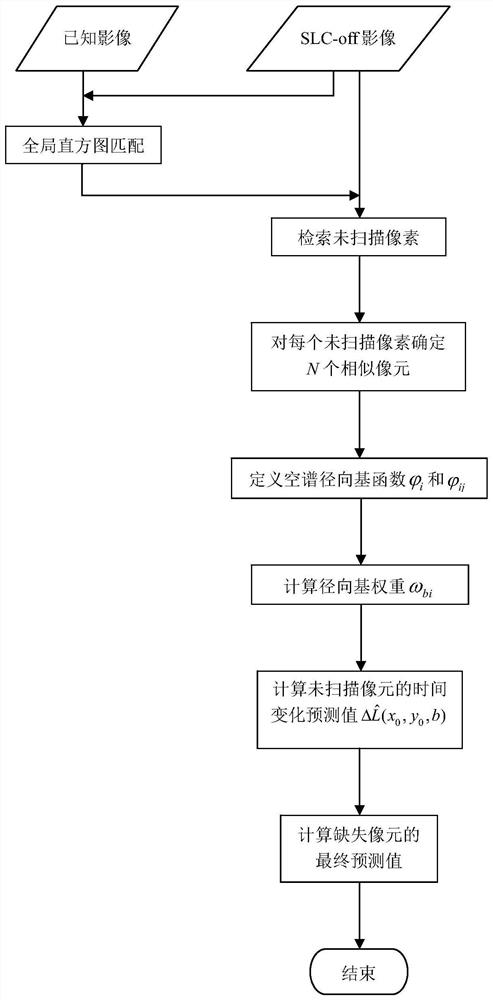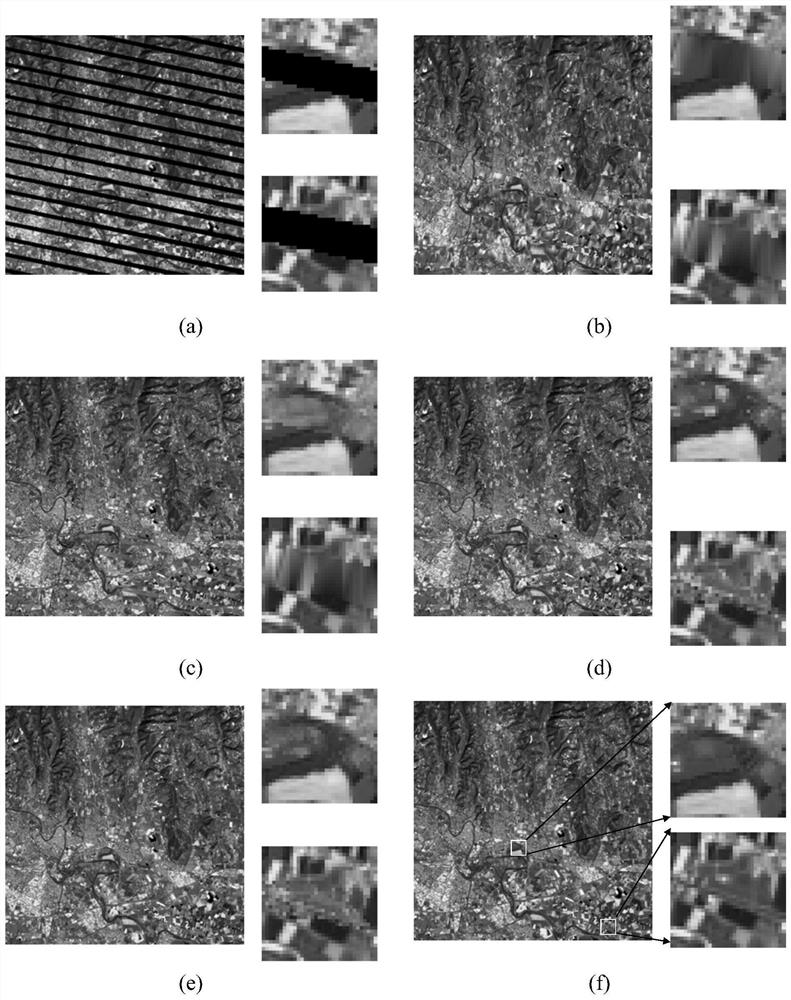Strip repairing method based on spatial-spectral radial basis function interpolation
A restoration method and basis function technology, applied in the field of remote sensing image processing, can solve problems such as failure to achieve the effect, inability to obtain time and available known images, etc., and achieve a good restoration effect
- Summary
- Abstract
- Description
- Claims
- Application Information
AI Technical Summary
Problems solved by technology
Method used
Image
Examples
Embodiment
[0038] The present invention relates to a strip restoration method based on spatial spectrum radial basis function interpolation, which is used for the restoration of SLC-off strip images, by performing GLHM (Global Linear Histogram Match) preprocessing on known auxiliary images to obtain Known images that are closer to the image to be repaired in the feature space; then use the spatial spectral radial basis function to interpolate the change in reflectivity of the pixel to be repaired in time, and obtain the known image pixel and the pixel to be repaired in each band The change of reflectance between; finally, the predicted change value is added to the data of the corresponding missing pixel position on the known image to obtain the final prediction result of the missing pixel. Such as figure 1 As shown, the repair method of the present invention specifically includes the following steps:
[0039] Step 1. Implement GLHM on known images. Denote the acquisition time of the kn...
PUM
 Login to View More
Login to View More Abstract
Description
Claims
Application Information
 Login to View More
Login to View More - R&D
- Intellectual Property
- Life Sciences
- Materials
- Tech Scout
- Unparalleled Data Quality
- Higher Quality Content
- 60% Fewer Hallucinations
Browse by: Latest US Patents, China's latest patents, Technical Efficacy Thesaurus, Application Domain, Technology Topic, Popular Technical Reports.
© 2025 PatSnap. All rights reserved.Legal|Privacy policy|Modern Slavery Act Transparency Statement|Sitemap|About US| Contact US: help@patsnap.com



